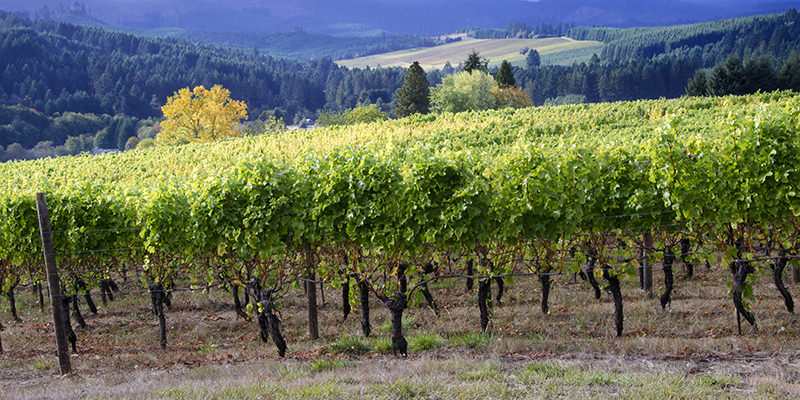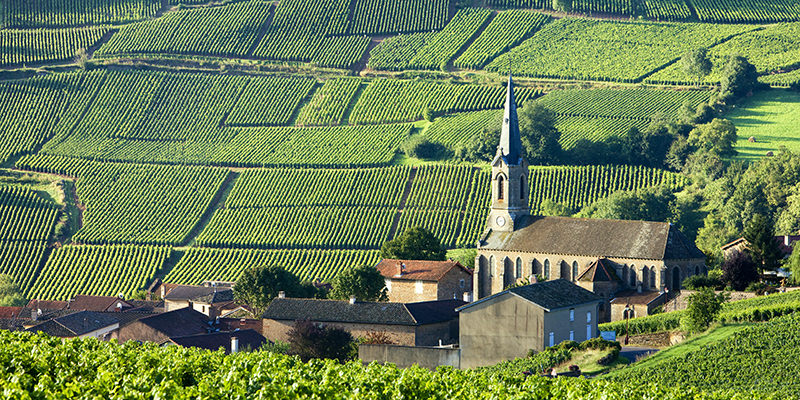A winemaker in Burgundy, France vinifies Pinot Noir from the famous Dijon clone. A winemaker in the Willamette Valley of Oregon does the same. Tasting these wines side by side there are significant differences in quality and structure. Our Oregon winemaker has the same clone planted in two different vineyards a few miles from each other and these are likewise cultivated and vinified in the same way yet also differ. Our Burgundian winemaker has three continuous plots of land. Each plot is planted with this same clone and are cultivated the same way. They are also vinified in similar ways. Yet when tasting the wines in a lineup they differ significantly as well. What’s up with that?
This is the notion of terroir, derived from the Latin word terra meaning earth or land. It’s a word coined by the French to express a wine’s sense of place. There is no English equivalent for this word. It was originally used to distinguish the wine making practices of old world wine, steeped in tradition, from new world wine, influenced by swings in fashion. These days though the idea and viewpoints on this are converging.
What is a sense of place?
Don't Miss A Drop Get the latest in beer, wine, and cocktail culture sent straight to your inbox.
This is when the resulting wine presents a somewhat direct representation of the climate the vine lives in. And this climate can be seen at three different levels known as macroclimate, mesoclimate and microclimate. These three levels combine to give a wine its terroir or sense of place that often cannot be replicated anywhere else. And generally they all interact and affect each other. The microclimate affects the the mesoclimate which in turn affects the microclimate. I know this may sound a bit dizzying but bear with me.
As the Earth as we know it today was being formed it experienced volcanoes and earthquakes, ice ages and constantly shifting sea levels forming mountains and valleys. Some valleys were once oceans. This caused the formation of many types of soil across the geography of our planet. Vines thrive in a range of soil compositions from highly draining granite and schist based soils to limestone and clay and vines, in turn, react to these different soils in different ways. And on top of the differing soils, certain areas of the world have such unique combinations of geology and topography that interact with specific sun exposures that the resulting wines have distinct characteristics that cannot be found anywhere else.
Some of these soils run for long stretches such as the limestone escarpment (macroclimate) in Burgundy influencing the lean yet powerful Pinots and Chardonnays of the Côte-d’Or. But within this escarpment there are many different combinations that interact with the limestone giving each vineyard a special personality (mesoclimate). And within some of these vineyards the soils can be different from row to row, affecting the vines themselves (microclimate).

Because much of European wine (old world) is steeped in tradition it is easier to get a sense of terroir. It’s a bit harder in a place like Napa or Sonoma (new world) because of the looser laws that govern winemaking but younger winemakers are coming around to the idea of terroir and trying to express the land. For a few years there was even an initiative in California called In Pursuit Of Balance that celebrated these new styles of wine.
And in Napa alone there is a great example of mesoclimate in the form of two AVA’s — Howell Mountain and Mount Veeder. Both mountains are prized for their Cabernet Sauvignon and each show unique examples of terroir. These wines can be expensive but when tasted side by side the Howell Mountain Cabs are stronger and more powerful due to the more arid climate with significant sun exposure and volcanic rock soil combined with water retentive red iron clay. On Mount Veeder the Cabs are powerful as well yet have a leanness to them. This area also has volcanic rock yet instead of clay we get seabed soil made of ancient fossils which causes nice steep drainage.
As you can see the idea of terroir is simple but at the same time quite complex. In the end though it is a winemaker trying to express the natural environment his or vines live in through the wine they make.

